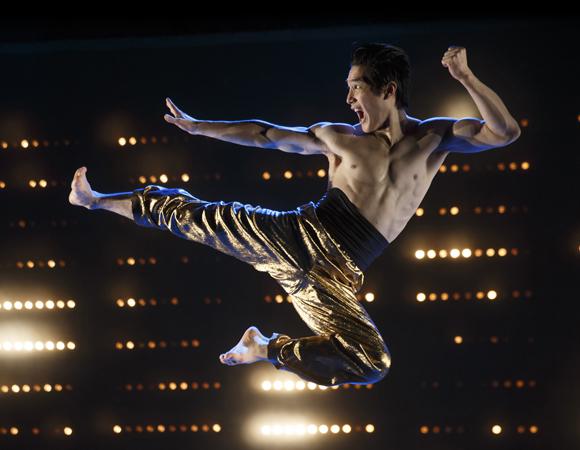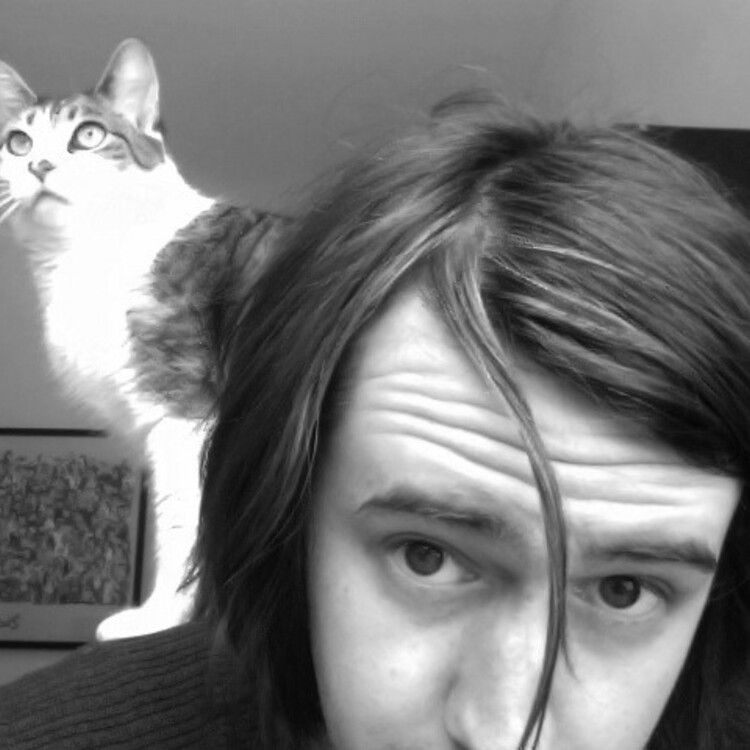The Life of Bruce Lee on Stage
Take two minutes to listen to Al Hirt's theme for the failed 60's television show, The Green Hornet. A funky "Flight of the Bumblebee," it's as irresistible as electric shock. Listening to it, it's hard to imagine how the show could have failed. Based on a long-running radio serial, and hoping to ride the success of the similarly action-heavy Batman television show, it starred Van Williams as a crime fighting newspaper editor, but is today best remembered as the show that introduced Bruce Lee to the United States.
Lee played Kato, the Hornet's "aide," in a role that allowed him to show off his martial arts chops, but gave him little else to do, because aide really meant a combination of bodyguard and chauffeur. In David Henry Hwang’s new play, which is running at the Signature Theater till March 30, Lee's time on the show, and his dissatisfaction with the role, comes at the midpoint.
At the end of Kung Fu's first act, Bruce (Cole Horibe) and the Green Hornet (Reed Luplau) storm the stage to "Flight of the Bumblebee." Wearing their famous masks, they confront eight or so acrobatic bad guys, dispatching them with roundhouse kicks, one-inch punches, and many a kung-fu scream. With each knock-down, a green and yellow flower of pain explodes on the projection behind them, not unlike one of Batman's colorful "Ka-Pows!" The effect is intoxicating. If only the real Green Hornet had been that good!
As on the show, Bruce is far more impressive than the Hornet, but still isn't the star. He exits while the Hornet dances underneath the main titles, "Starring Van Williams" gigantic above his head, and the scene crossfades to Bruce and his wife Linda (Phoebe Strole), who are buying a Beverly Hills mansion when he informs her that the series has been cancelled. She's distraught, but Bruce is happy to let the chauffeur's costume go.
As on the show, Bruce is far more impressive than the Hornet, but still isn't the star. He exits while the Hornet dances underneath the main titles, "Starring Van Williams" gigantic above his head
"When I am knocked down, I get up again," he says, in a thick Hong Kong accent. "And fight harder."
And then, because the Green Hornet theme is too good to waste, he goes back out for another round with the "Flight of the Bumblebee," finishing by ripping off his mask. The audience erupts. For a moment, you feel you are watching a play that knows precisely how to handle its source material.
Just as often as the biographical material raises Kung Fu up, it slows the drama. Although it moves seamlessly between Lee's present and his childhood, which he spent streetfighting and arguing with his opera singer father, (the excellent Francis Jue), Hwang's script is essentially structured as a Hollywood biopic. This makes it a wonderful presentation of Bruce Lee's personality, which is captured effortlessly by Horibe a onetime Tae Kwon Do silver medalist and So You Think You Can Dance? second runner-up. But by attempting to tell Lee's life story, all the way from his childhood to his decision to begin making films in Hong Kong, the drama loses some of its momentum. We learn the facts of Lee's life, but the mask never really comes off.
Even so, Kung Fu is an engaging, occasionally thrilling show. As staged by choreographer Sonya Tayeh and fight choreographer Emmanuel Brown, the many Kung Fu sequences, which weave back and forth between fight and dance, are mesmerizing. They get a boost from Du Yun's original score, which—aside from being smart enough to defer to Rimsky-Korsakov when it counts—underscores the fight sequences with just enough funky seventies horn to let Bruce Lee strut.

directed by Leigh Silverman, at the Signature Theatre. Photo by Joan Marcus.
And strut he does, particularly in the early sequences, when he is nothing more than a struggling martial arts instructor, with a bad temper and a few ideas about philosophy. In one of these scenes, Lee leads his class—and his bride to be—through a sequence of basic Jeet Kun Do movements. Although his moves match everyone else's, there is an electricity in Horibe's performance that makes him the natural center of attention, even as the shortest man on stage.
In these sequences, Lee's charisma comes through easily. We understand why Linda would fall for him, and we want him to get a chance to show the world his stuff. A few other scenes support this, such as the first one, when he charms a Martha Graham devotee by explaining the philosophy that underlies his martial arts.
"You're trying to use ancient Chinese philosophy to get in my pants?" she asks, half-convinced.
"Philosophy," he says, "it should be practical."
These quiet, human moments are the best in the play—whether it's young Bruce pestering his father to teach him martial arts, or modern-day Bruce fielding the same request from his son while trying to rehab his hurt back. But when it comes to Bruce's larger ambitions—to show up his father, to bring Jeet Kun Do to the world, to prove to Hollywood that a Chinese man can be an action star—Hwang's script relies on literal pronouncements of intent. Each time Bruce declares that he wants “to change Hollywood,” we believe him less and less.
Placing Lee's story onto a dramatic arc requires a continual restatement of theme. At the end of Act I, he buys a house right after his TV show is cancelled. Halfway through Act II, his wife suggests that she get a job, to help make ends meet, and he tells her, "Look, Babe, it is my job to support the family.… A man has to do this." Twenty minutes later, she gets a job anyway, explaining her decision with a roundabout speech:
We’re a team. Do you know what a team is, Bruce? I know, you’re used to doing things alone. You like to be alone. But sometimes, you don’t get to be alone. Sometimes, you need someone. Just for a while. Until you get well. And then, I promise, you can go back to doing everything yourself. Not needing anything from anyone. I promise—you can go back to being completely alone.
With this, the theme that was first established at the start of the play—Bruce wants to go it alone—is revisited.
In the final scene, when Bruce battles the memory of his father with quarterstaffs, they keep talking even after the fight has begun. Two hours into the play, the conflict between father and son should be clear enough that minimal dialogue is needed. And yet, they continue to repeat themselves.
Finally, Bruce drops his staff. He is finished fighting his father, and his father is finished fighting him. Instead, they dance together—the Chinese dance that Bruce's father refused to teach him earlier in the play. It's a beautiful moment, even sublime, and thankfully silent. Finally, the play trusts us to know what's really going on.


Comments
The article is just the start of the conversation—we want to know what you think about this subject, too! HowlRound is a space for knowledge-sharing, and we welcome spirited, thoughtful, and on-topic dialogue. Find our full comments policy here